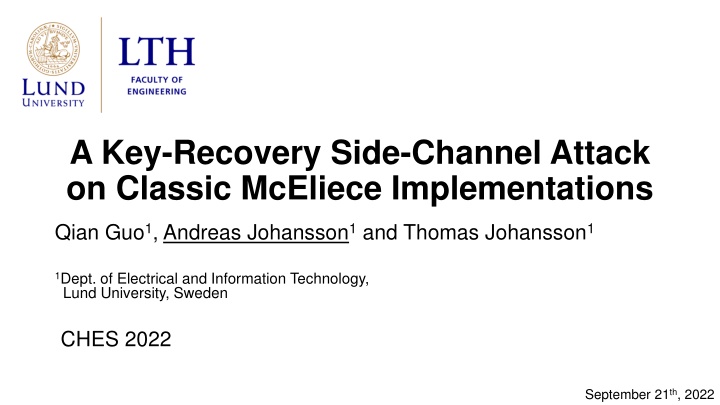
Key Recovery Side-Channel Attack on Classic McEliece Implementations
"Learn about a key recovery side-channel attack on Classic McEliece implementations presented at CHES 2022. Explore insights into the secret key parts, side-channel measurements, and results of the attack."
Download Presentation

Please find below an Image/Link to download the presentation.
The content on the website is provided AS IS for your information and personal use only. It may not be sold, licensed, or shared on other websites without obtaining consent from the author. If you encounter any issues during the download, it is possible that the publisher has removed the file from their server.
You are allowed to download the files provided on this website for personal or commercial use, subject to the condition that they are used lawfully. All files are the property of their respective owners.
The content on the website is provided AS IS for your information and personal use only. It may not be sold, licensed, or shared on other websites without obtaining consent from the author.
E N D






















